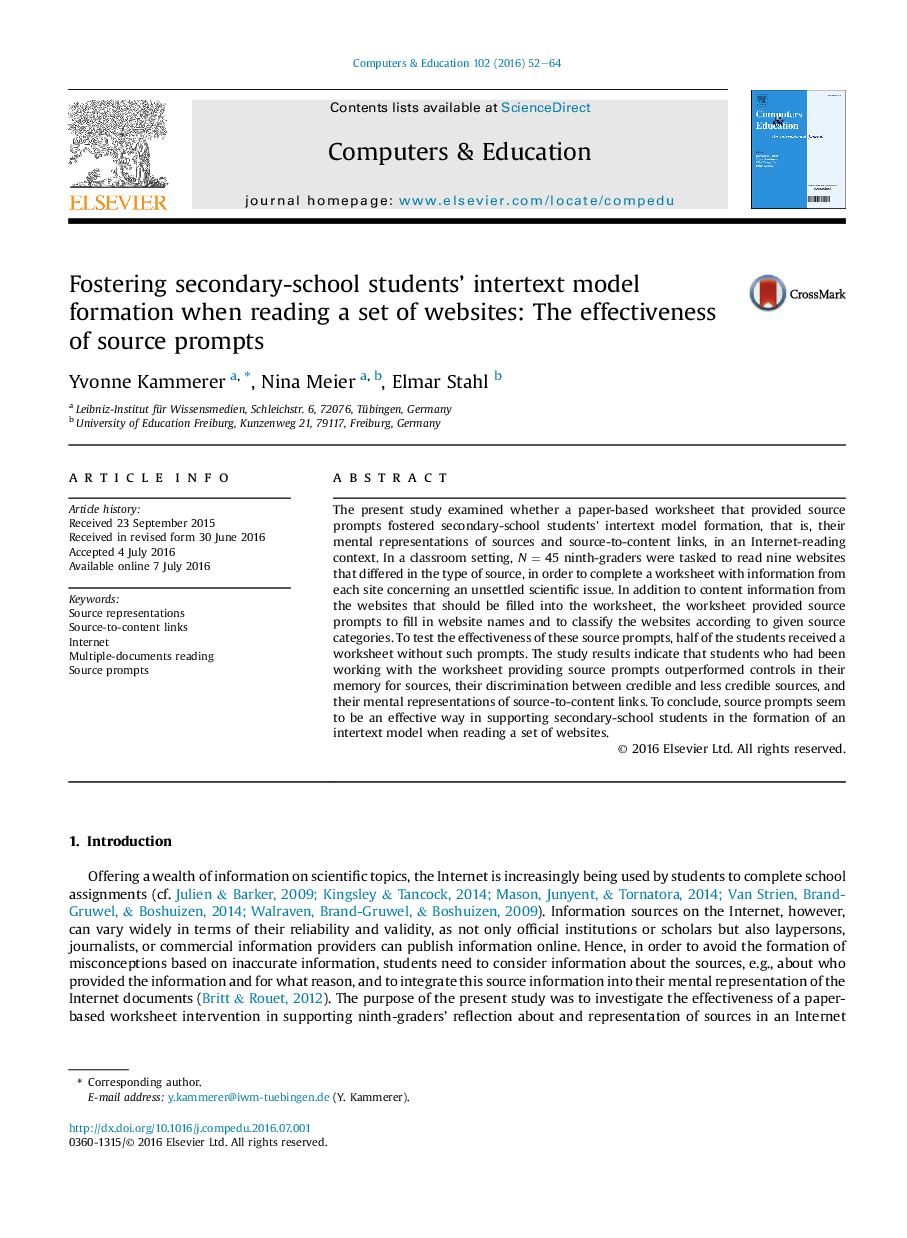| Article ID | Journal | Published Year | Pages | File Type |
|---|---|---|---|---|
| 348144 | Computers & Education | 2016 | 13 Pages |
•Effects of a worksheet that provided source prompts examined in ninth-graders.•Prompts to fill in website names and to assign websites to source categories.•Prompts enhanced students’ memory for sources.•Prompts led to better discrimination between credible and less credible sources.•Prompts enhanced students’ representations of source-to-content links.
The present study examined whether a paper-based worksheet that provided source prompts fostered secondary-school students’ intertext model formation, that is, their mental representations of sources and source-to-content links, in an Internet-reading context. In a classroom setting, N = 45 ninth-graders were tasked to read nine websites that differed in the type of source, in order to complete a worksheet with information from each site concerning an unsettled scientific issue. In addition to content information from the websites that should be filled into the worksheet, the worksheet provided source prompts to fill in website names and to classify the websites according to given source categories. To test the effectiveness of these source prompts, half of the students received a worksheet without such prompts. The study results indicate that students who had been working with the worksheet providing source prompts outperformed controls in their memory for sources, their discrimination between credible and less credible sources, and their mental representations of source-to-content links. To conclude, source prompts seem to be an effective way in supporting secondary-school students in the formation of an intertext model when reading a set of websites.
